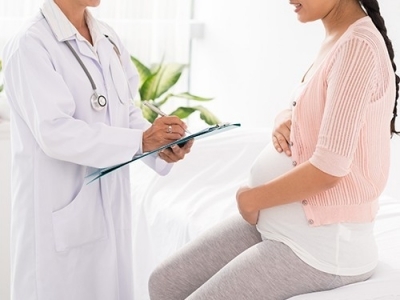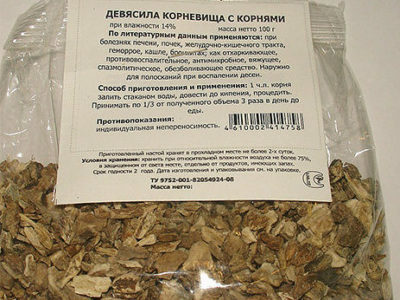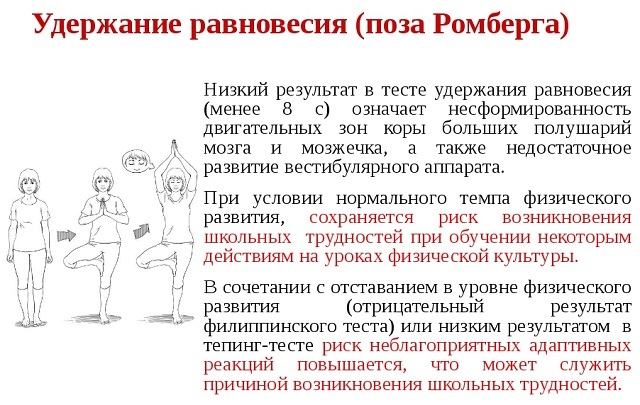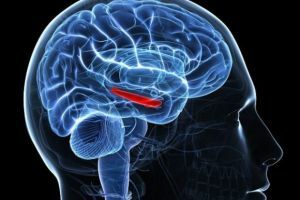1 Classification of dyspepsia
Dyspeptic phenomena are divided into 4 types:
- fermenting;
- putrefactive;
- fat;
- pancreatic.
Do you have gastritis?
GALINA SAVINA: "How easy is it to cure gastritis at home for 1 month." A proven method is to write down a recipe. ..! "Read more & gt; & gt;
Fermentation disorders occur as a result of increased activity of the small intestine. In this case carbohydrates from the consumed products are not digested properly. Often, this reason arises from the frequent use of fermented foods and beverages that create favorable conditions in the intestines for the formation of fermentation flora. Such disorders are manifested in the form of a cluster of gases, gurgling in the stomach, a stooly liquid stool with a fetid odor.
Dyspeptic phenomena of putrefactive nature arise from the rotting of food in the intestines. Such disorders occur when digestive secretion and the bactericidal function of hydrochloric acid are disturbed, that is, the level of acid-base balance in gastric juice is significantly reduced. At the same time in the upper part of the small intestine appears microflora from the lower gastrointestinal tract. It is the increased secretion of intestinal juice that leads to the appearance of putrefactive disorders. This form of dyspepsia is accompanied by a frequent liquid stool.
Fat phenomena appear due to the use of poorly digestible fats. The cause of pancreatic type of disorders are pancreatic pathologies. Patients can complain of pain and rumbling in the abdomen, poor appetite and fatty diarrhea.
In addition, dyspepsia is classified into 2 groups of disorders. The first group includes functional phenomena that appear due to gastrointestinal lesions. With functional dyspeptic disorders, symptoms do not disappear after defecation.
The second group is associated with organic phenomena, in which pathologies of the digestive system are observed. Such pathologies may include damage to the mucous membrane of the stomach, duodenum or esophagus, ulcer, bile duct disease, pancreatitis, tumors, intestinal anemia, etc. When eliminating the cause of dyspepsia, clinical symptoms disappear.
Dyspepsia can be toxic, simple and chronic. Toxic form is characterized by acute disorders of the digestive system with clinical signs of toxicosis. Simple dyspepsia occurs as a result of malnutrition. This form is most often observed in persons with weakened immunity or in pregnant women. Chronic dyspeptic phenomena occur more than 5-7 days during the month.
-
 IMPORTANT TO KNOW! Gastritis? Ulcer? To have a stomach ulcer not turned into cancer, drink a glass. ..Read the article & gt; & gt;
IMPORTANT TO KNOW! Gastritis? Ulcer? To have a stomach ulcer not turned into cancer, drink a glass. ..Read the article & gt; & gt;

Recommended to read
- What is indigestion
- Symptoms and treatment of diaphragmatic hernia
- Causes and treatment of bloating in the intestines
- Effective agent for gastritis and gastric ulcer
2 Causes of the pathology of
The cause of the development of intestinal dyspepsia is most often an incorrect and monotonous diet. Such dyspeptic disorders are called alimentary. Dyspeptic disorders are associated with slow gastric emptying. The cause of this phenomenon can be overeating, long-term use of the same product. Stress can lead to frustration, a constant distraction for extraneous activities during a meal.

The causes of the functional phenomena are related to the mismatch of the central regulatory mechanisms. As for organic disorders, they can arise as a result of acute or chronic gastritis, the formation of benign or malignant tumors, ulcers, gallbladder pathologies.
Taking certain medicines, especially antibiotics, anti-tuberculosis and antitumor drugs, hormones can be the primary cause of dyspepsia. Disorders of the stomach and intestines can be caused by household poisoning, viral diseases and purulent infections.
-
 Gastroenterologist VAZHENOV: "I beg you, if you began to worry about abdominal pain, heartburn, nausea, do not in any way do gases. .."Read more & gt; & gt;
Gastroenterologist VAZHENOV: "I beg you, if you began to worry about abdominal pain, heartburn, nausea, do not in any way do gases. .."Read more & gt; & gt;
As a rule, dyspeptic phenomena are a symptom of another disease. Therefore, they can occur with gastroesophageal reflux disease, diaphragmatic hernia, cholecystitis, cholelithiasis, viral hepatitis A.
In newborns or in young children, dyspeptic disorders arise due to the fact that they are fed with products that are not age-appropriate. In such a case, children may develop intolerance to a product. Also, the physiological form develops, which is due to the immaturity of the enzyme production function. This pathology, as a rule, passes independently by 10-12 years.

3 Symptomatic manifestations of
Clinical manifestations of dyspeptic disorders are very diverse. The nature of manifestations of pathology mainly depends on the underlying cause. Nevertheless, it is possible to identify the main symptoms that are characteristic of dyspepsia.
The patient has a feeling of discomfort and heaviness in the abdomen. In some cases, pain syndromes of various types may appear. The patient is also tormented by frequent burping of air, after which the patient's well-being improves for some time.
TIP FROM THE MAIN GASTROENTEROLOGIST
Korotov SV: "I can recommend only one remedy for the rapid treatment of Ulcer and Gastritis, which is now recommended by the Ministry of Health. .." Read the reviews & gt; & gt;

Sometimes you may feel unpleasant burning in the upper abdomen and behind the sternum. After eating, heartburn occurs. Symptoms are also accompanied by bloating, which is supplemented by the accumulation of gases.
In patients, appetite deteriorates and a sense of rapid saturation appears even after a small meal. Appears and upset of the chair.
With enzymatic disorders, nausea and flatulence may appear. To clinical manifestations may be added an unpleasant taste in the mouth and gurgling in the stomach. With enzymatic dyspepsia, the stool becomes frequent and liquid. In fecal masses may contain the remains of undigested food. The general condition of the patient worsens. There is weakness, lethargy, insomnia, fast fatigue.
The putrefactive manifestations of pathology are similar to the symptoms of an organism's intoxication. There is a general malaise, nausea, vomiting, abdominal pain. The stool is liquid with a characteristic odor. Feces take on a darker shade.

Fermentation dyspepsia is accompanied by frequent gas and bloating. Pain sensations may be absent altogether. Diarrhea becomes fluid and foamy with an acidic odor. Feces of light color.
Fatty dyspeptic disorders are characterized by severe pain syndrome, belching and a feeling of heaviness in the abdomen. Symptoms tend to worsen after eating. The chair is not frequent, but plentiful. Feces have whitish color with characteristic fatty shine.
WE RECOMMEND!
For prevention and treatment of Digestive Diseases our readers advise Monastic tea. This unique remedy consists of 9 medicinal herbs useful for digestion, which not only supplement, but also strengthen each other's actions. Monastic tea will not only eliminate all symptoms of the gastrointestinal tract and digestive system, but will also permanently eliminate the cause of its occurrence.
Opinion of doctors. .. »
How does neonatal dyspepsia manifest? Symptom of a dyspeptic phenomenon in infants is frequent vomiting and bloating. Feces have a green tint with whitish impregnations. The behavior of the baby changes dramatically, it becomes very moody.
4 Treatment measures
The main component of the treatment of dyspeptic disorders, regardless of the root cause, is the correction of nutrition. Only with proper nutrition can you count on a positive result of treatment.

Take food often about 4-5 times a day in divided batches. Overeat and snack especially at night is strictly prohibited. During treatment, you should stop smoking and alcoholic beverages. Preferences should be given to low-fat broths, vegetable soups, porridge on the water, dairy products, pasta and liquids. To exclude it is necessary fried and fatty dishes, sweets, strong coffee, fizzy sweet drinks, chocolate, sour fruit and fresh vegetables. Especially diet is important for fatty form of dyspepsia.
Treatment of dyspepsia is complex. As a drug treatment doctors prescribe antidiarrheal drugs. The course of treatment is appointed strictly by the attending physician, otherwise complications are possible. The patient is prescribed and anesthetic drugs of the spasmolytic series, which quickly and permanently relieve the pain syndrome.
To reduce the acidity of gastric juice, doctors prescribe blockers of the hydrogen pump or H2-histamin blockers.
Enzyme preparations break down food into micro-substances and thereby help to normalize the process of digestion.
If the cause of dyspepsia is stress or depression, then medication involves taking antidepressants and sedatives. As a non-drug treatment, therapeutic measures can be performed.

Functional disorders are treated with proctitis. Such means allow to normalize the functional activity of the gastrointestinal tract. In the case of an ulcerative manifestation of dyspepsia, doctors prescribe antisecretory medications and antacids. In this case, eradication therapy can be carried out.
In the treatment of putrefactive phenomena, the patient is prescribed fasting for the first 2-3 days. It is allowed to drink only water without gas, broth of dogrose or kissel. From drugs, doctors prescribe Pancreatin and sulfonamides.
Besides this, the main disease that caused dyspepsia is treated. Only in the case of complex treatment can the development of complications and relapse be avoided.
5 Nontraditional methods of therapy
In the treatment of dyspeptic disorders, herbal decoctions are well established. For the preparation of one of them it will take 1 tsp.root of elecampane and 250 ml of water. Fill the contents with water and put on a weak fire. Boil for 3-5 minutes. Cool the broth strain through gauze. Take three times a day for 1/3 cup for 12-14 days. This method will help to normalize the state of the gastrointestinal tract.

To reduce painful cider, take 2 tbsp.mint, chamomile flowers and sage.1/3 of st.l.crushed herbal collection, pour 200 ml of boiling water. Leave the infusion for 15-20 minutes. Take three times a day for ½ cup before meals.
Improving digestion will help the infusion based on marjoram and cumin. Take 1 tbsp each.spices and pour them 250 ml of boiling water. Let it brew for 15-20 minutes. Take infusion 2 times a day for ½ cup.
To remove the pain and normalize the work of the digestive tract, a decoction from the rhizome of calamus, valerian and fennel fruits will help. Take 15 g of fennel and 20 g of root ayr and valerian. The resulting mixture, pour 200 ml of boiling water and put on fire. Boil for 10-15 minutes. Take the broth 2 times a day for ¾ cup.
With flatulence, a healing broth on the basis of yarrow, chamomile, mint and sage helps. Take 1-1.5 tablespoons.each herb and chop. Pour 1.5 teaspoons of herb collection with one glass of boiling water and leave on the stove for 7-10 minutes. Take 2 times a day for ½ cup.
A bath with a linden helps to remove the pain. Brew in one liter of water 150-200 g of dry linden. Boil the lime broth for 5-7 minutes and pour the contents into the bath. Take a bath can be no more than 15-20 minutes. This bath has antibacterial action.
In liquid stool it is recommended to take infusion of nettle, which has a strengthening effect in fermenting disorders, anti-inflammatory effect in all forms of dyspepsia. Pour 15-20 g of dry nettle with one glass of boiling water. Take 1 tbsp.infusion 3 times a day.
Relieves inflammation and reduces the pain of infusion of chicory vulgaris. Pour 200 ml of boiling water 20 g of chicory. Take infusion 3 times a day for 1 tbsp.
Raises appetite with an infusion of centenarius. To make it, you need to pour 10 g of grass with one glass of boiling water. Leave for 20-25 minutes. Take 30-40 minutes before meals for 1 tablespoon.
- 1 Classification of dyspepsia
- 2 Causes of pathology
- 3 Symptomatic manifestations
- 4 Treatment measures
- 5 Non-traditional therapies
Dyspeptic phenomena in the stomach develop as a result of inadequate digestion enzymes or as a result of malnutrition. Dyspeptic phenomena are accompanied by unpleasant clinical manifestations from the intestine and gastrointestinal tract. Often diarrheal disorders of the stomach are diagnosed at an early age or in people with chronic diseases of the digestive system.



